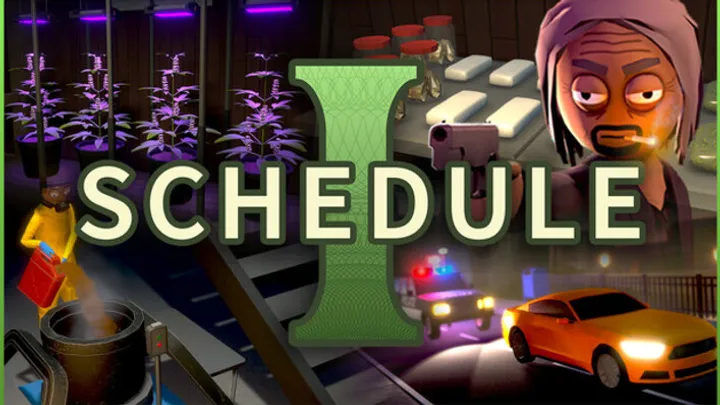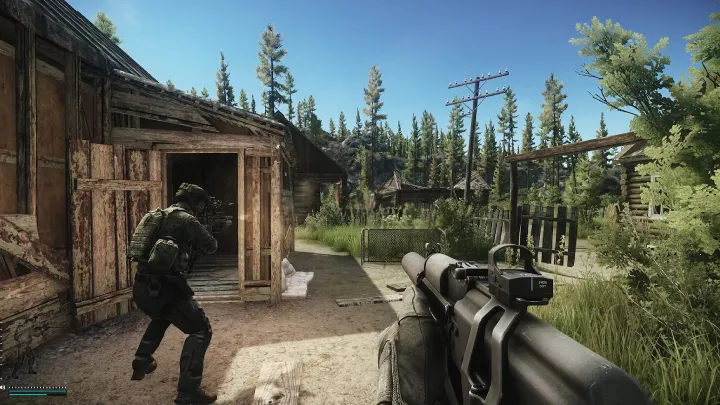Schedule I is not your typical action or adventure game. It’s a mind-bending psychological experience designed to challenge the player’s perception, decision-making, and emotional endurance. Set in a dystopian environment where rules are ambiguous and morality is constantly tested, Schedule I forces players to confront complex choices that influence both the story and their character’s psyche.
Developed as a narrative-driven simulation, the game revolves around a mysterious facility where subjects are tested through a sequence of tasks known as “Schedules.” Schedule I, the first in the series, focuses on understanding human behavior under extreme psychological pressure. The player’s mission isn’t simply to survive, but to interpret the hidden logic behind every test and uncover the truth behind the system.
This guide will show you how to navigate the world of Schedule I, solve its intricate puzzles, manage your psychological stability, and make the right decisions to reach the best possible ending.
Understanding the Core Concept of Schedule I

At its core, Schedule I is a narrative puzzle game that blends psychological horror, moral decision-making, and strategic survival. You play as a test subject trapped inside a facility governed by artificial intelligence. The AI, known as Overseer, assigns daily schedules that range from logical puzzles to emotional simulations.
Each decision you make alters your mental state, and your mental state affects the type of missions and dialogues you encounter later in the game. There’s no clear distinction between right and wrong — only consequences. Understanding this dynamic is essential because Schedule I isn’t about completing tasks mechanically but interpreting the motives behind them.
The key is awareness. The more you observe your surroundings, analyze small environmental cues, and question instructions, the closer you get to discovering the truth. Unlike typical puzzle games, the challenge lies not in solving problems but in understanding why they exist.
Starting the Game: The Orientation Phase
When you first begin Schedule I, you’ll wake up in a sterile white room with no memory of how you arrived. The tutorial doesn’t explain much, which is intentional — the game wants you to feel confused.
The orientation phase introduces you to the concept of “Schedules,” a sequence of timed experiments that must be completed to progress. During this stage, you’ll learn basic controls like movement, interaction, and dialogue selection. The facility’s voice (Overseer) will guide you, but its instructions are often cryptic.
Pay attention to details. The room’s lighting, sounds, and text logs contain clues. For example, subtle changes in background noise can signal emotional shifts or hidden timers. Schedule I tests perception as much as reasoning, so it’s wise to explore everything before making choices.
Learning the Game Mechanics

The mechanics of Schedule I are deceptively simple. You move through rooms, interact with objects, solve puzzles, and respond to psychological prompts. However, every action subtly affects your emotional and mental metrics, which are tracked in the “Cognitive Index.”
The Cognitive Index measures four key attributes: Rationality, Empathy, Compliance, and Instability.
- Rationality increases when you follow logic and complete tasks efficiently.
- Empathy grows when you show compassion or protect others.
- Compliance rises when you obey Overseer’s commands.
- Instability increases when you act unpredictably or resist the system.
Balancing these stats determines which narrative path you’ll follow. For example, high Rationality with low Empathy might unlock a cold, analytical storyline, while high Empathy and Instability can reveal hidden emotional endings.
Mastering the Puzzle System
Each Schedule contains a different type of challenge, from mathematical riddles to moral dilemmas. The puzzles are designed not only to test intelligence but to provoke emotional responses. Some may seem unsolvable at first, but the clues often lie outside the puzzle itself.
To master puzzles:
- Observe the environment many clues are visual or auditory rather than written.
- Keep notes patterns repeat across different Schedules.
- Trust your instincts emotional decisions can sometimes be more rewarding than logical ones.
Some puzzles also have time limits. Failure doesn’t always mean game over, but it can alter your Cognitive Index dramatically, triggering new dialogue or events later on. The best approach is experimentation; every failure reveals more about the system’s design.
Managing Mental Stability and Emotions
Mental stability is one of the most critical aspects of Schedule I. The longer you stay in the facility, the more your psychological state deteriorates. This is represented visually through distorted environments, glitching sound effects, and hallucinations.
You can stabilize your mind through rest, reading data logs, or forming connections with other test subjects. However, trusting others can be risky — some are simulations meant to manipulate your emotions.
The key is moderation. Too much compliance leads to emotional numbness, while too much instability can trigger self-destruction events. Staying balanced allows you to perceive hidden layers of the world that are invisible to extreme mind states.
Making Choices and Understanding Consequences
Schedule I’s decision-making system is one of its defining features. Choices are rarely labeled as “good” or “bad.” Instead, they reflect your interpretation of morality and truth. Every dialogue option, object interaction, or puzzle decision shifts your Cognitive Index and influences later missions.
For example, choosing to help a fellow subject escape might boost Empathy but lower Compliance, leading Overseer to punish you with harsher tasks. Conversely, following every rule blindly might preserve your Rationality but erase your sense of humanity.
The beauty of the system lies in replayability. Each decision opens a different narrative branch, encouraging players to replay and explore the moral complexity of the world.
Building Strategy for Survival
Survival in Schedule I isn’t about physical endurance but psychological resilience. The key strategies include:
- Prioritizing rest to slow mental decay.
- Avoiding repetitive behavior that triggers suspicion from Overseer.
- Managing your Cognitive Index to prevent emotional collapse.
- Observing environmental changes after each Schedule — they often foreshadow upcoming events.
The AI tracks not only your choices but how long you take to make them. Deliberation can sometimes unlock secret dialogue, while quick responses may lead to trust or punishment.
The best strategy is adaptability. There is no single winning path — the optimal route depends on how you interpret the world and your desired ending.
Unlocking Hidden Endings and Secrets
Schedule I offers multiple endings depending on your Cognitive Index and key decisions. There are typically five main outcomes: Compliance, Rebellion, Collapse, Enlightenment, and Paradox.
- The Compliance Ending occurs when you fully obey Overseer. The game ends with your total submission, symbolizing loss of self.
- The Rebellion Ending happens when you resist the system and uncover the truth behind the experiments.
- The Collapse Ending results from high Instability, leading to mental breakdown.
- The Enlightenment Ending is achieved by balancing all attributes, granting full awareness of the simulation’s nature.
- The Paradox Ending appears when you uncover contradictions in the AI’s logic, causing a system shutdown.
Discovering these endings requires multiple playthroughs, each time making different moral and strategic choices.
Interpreting Symbolism and Story Themes
Schedule I is rich in symbolism. Every test, corridor, and piece of dialogue represents something about human nature — obedience, fear, compassion, or control. The facility symbolizes society, Overseer represents authority, and the Cognitive Index mirrors your conscience.
Understanding the story’s metaphorical layer is key to appreciating its depth. Many players interpret the game as a commentary on conformity and free will, while others see it as a reflection of personal growth and self-awareness.
The deeper you explore, the more philosophical the narrative becomes. Schedule I isn’t just about escaping the system; it’s about understanding why we create systems that control us.
Reaching the True Ending
To reach the true ending of Schedule I, you must maintain a perfect balance between Rationality, Empathy, and Instability while discovering all hidden logs and completing every Schedule. Only then can you confront Overseer and reveal the truth that the entire experiment was a simulation designed to measure human consciousness.
In this ending, you achieve full awareness and break free from the system, symbolizing liberation from both external control and internal fear.
However, this path is extremely challenging. Every decision matters, and even small emotional reactions can shift your stats unpredictably. The true ending rewards patience, critical thinking, and emotional insight.
Conclusion
Schedule I is a profound and haunting psychological journey that challenges players to think, feel, and question everything. It’s not just a game about survival but about understanding the mind, morality, and the illusion of control.
To master Schedule I, you must balance logic and emotion, question authority, and embrace uncertainty. Every action has meaning, every choice has consequence, and every moment tests who you truly are.
The path to freedom lies not in obedience or rebellion but in self-awareness — the courage to see beyond the schedule and define your own truth.
Summary:
Learn how to master Schedule I by balancing logic, emotion, and morality to uncover the truth behind its psychological and philosophical tests.

















